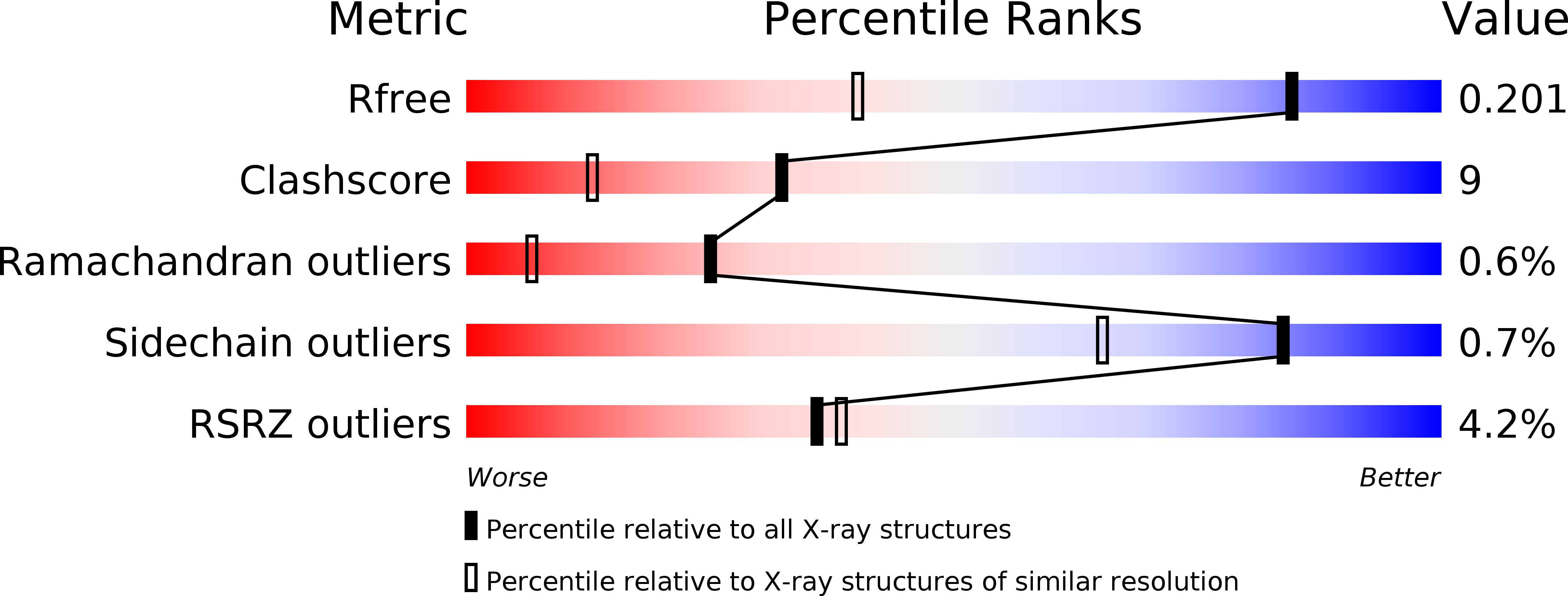
Deposition Date
2017-03-23
Release Date
2018-02-07
Last Version Date
2024-10-30
Entry Detail
PDB ID:
5V9U
Keywords:
Title:
Crystal Structure of small molecule ARS-1620 covalently bound to K-Ras G12C
Biological Source:
Source Organism:
Homo sapiens (Taxon ID: 9606)
Host Organism:
Method Details:
Experimental Method:
Resolution:
1.38 Å
R-Value Free:
0.18
R-Value Work:
0.14
R-Value Observed:
0.15
Space Group:
P 1


